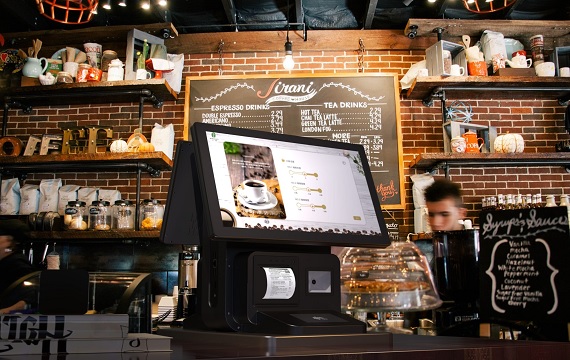You know those little devices you see at every checkout counter these days? The ones where you tap, insert, or swipe your card to pay for your purchases? Yes, those are payment terminal devices.
Payment terminal machines, also known as Point of Sale (POS) terminals or card readers, are the bridge between your hard-earned cash and the merchant’s bank account. They’re the technological middlemen that make sure your payment goes through smoothly and securely.

A Brief History Lesson
Back in the day, the only way to pay for stuff was with good ol’ cash or checks. Then, plastic cards came along and changed the game. But even then, you had to sign a paper receipt and wait for the merchant to process it later.
Enter payment technical machines. These made it possible to process card payments on the spot, speeding up transactions and making life a whole lot easier for everyone involved.
The Different Types of Payment Terminal Machines
Not all payment terminal machines are created equal. They come in different shapes, sizes, and flavors, each with its own unique set of features and capabilities. Here are some of the most common types:
Countertop Terminals

These are the classic payment terminal machines you’ll find at most retail stores and restaurants. They’re sturdy, reliable, and usually have a built-in printer for receipts. Countertop terminals are perfect for businesses with a fixed checkout location.
Wireless Terminals

As the name suggests, wireless terminals aren’t tethered to a specific location. They use Wi-Fi or cellular data to process payments, making them ideal for businesses that need to accept payments on the go, like food trucks or pop-up shops.
Mobile Card Readers
These compact little gadgets turn your smartphone or tablet into a payment terminal. They’re super portable and perfect for small businesses or freelancers who need to accept payments anywhere, anytime.

How Does a Payment Terminal Machine Work?
When you swipe, tap, or insert your card into a payment terminal device, it reads the card’s information and sends it to the merchant’s payment processor. The processor then talks to your card issuer (usually a bank) to verify that you have enough funds and that the transaction is legit.
If everything checks out, the payment processor gives the green light, and the money gets transferred from your account to the merchant’s account. It’s like a digital handshake between all the parties involved, making sure everyone gets what they’re owed.
The Importance of Security
With all that sensitive financial data flying around, security is a top priority for payment terminal machines. That’s why they use encryption and other fancy security measures to protect your information from prying eyes and cybercriminals.
Most modern payment terminals also support EMV chip cards, which are much more secure than the old-school magnetic stripe cards. The chip creates a unique code for each transaction, making it virtually impossible for fraudsters to clone your card.
Choosing the Right Payment Terminal Machine for Your Business
With so many options out there, choosing the right payment terminal machine can be a daunting task. Here are a few things to consider:
Cost
Payment terminal machines can range from a few hundred bucks for a basic model to several thousand for a sounded-up version with all the bells and whistles. Don’t forget to factor in ongoing fees like processing charges and monthly rental fees (if applicable).
Features
Do you need a built-in printer? What about the ability to accept contactless payments or mobile wallets like Apple Pay? Make a list of the features that are must-haves for your business and prioritize accordingly.
Compatibility
Make sure the payment terminal machine you choose is compatible with your existing point-of-sale system, accounting software, and payment processor. You don’t want to end up with a fancy new gadget that doesn’t play nice with the rest of your teaching stack.
Ease of Use
Not everyone is a tech wizard. Choose a payment terminal machine that’s user-friendly and easy to set up and operate, especially if you have a team of employees who will be using it.

The Future of Payment Terminal Machines
Technology moves at the speed of light, and payment terminal machines are no exception. Here are a few trends and innovations to keep an eye on:
Contactless Payments
In a world where we’re all trying to avoid germs and unnecessary contact, contactless payments (like Apple Pay and Google Pay) are becoming increasingly popular. Many modern payment terminal machines already support this technology, and it’s only going to become more widespread in the years to come.
Integrated POS Systems
As businesses become more tech-savvy, we’ll likely see more payment terminal machines that are fully integrated with point-of-sale systems and other software. This seamless integration can streamline operations, improve data management, and provide valuable insights into sales and customer behavior.
Enhanced Security Measures
With cybercrime on the rise, payment terminal manufacturers are constantly working to enhance security features. We may see biometric authentication (like fingerprint or facial recognition) become more common, as well as advanced encryption and fraud detection capabilities.
Wrapping It Up
Payment terminal machines are an essential part of modern life. They make it easy and convenient for businesses to accept payments and keep the wheels of commerce turning.
Sure, they may seem like boring little gadgets, but they’re impressive when you think about all the complex processes happening behind the scenes to ensure safe and secure transactions.
So the next time you tap or swipe your card, take a moment to appreciate the unsung hero that is the payment terminal machine. It’s the little guy that keeps our cashless society running smoothly.

